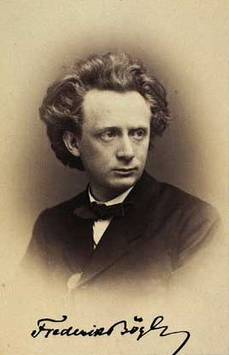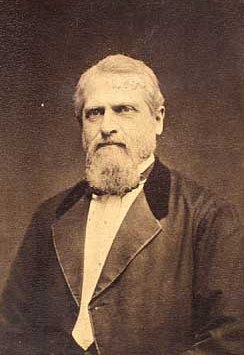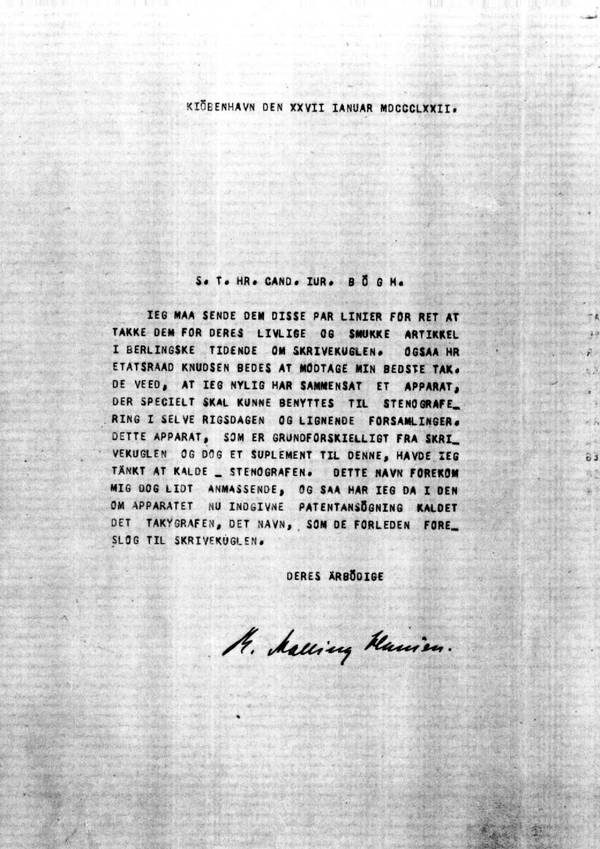1872.01.27 English
Letter from RMH to Bøgh, Bachelor of Laws
Dated January 27, 1872
Written on a writing ball with only upper case letters – but without digits and without the Danish vowels of Ø, Å, Æ and also no letter J. This is a whole new combination – and it also features a nice right hand margin and very short lines.
COPENHAGEN XXVII JANUARY MDCCCLXXII
MR BÖGH, B.L.L., S.T.
SIR, I AM WRITING THESE LINES IN ORDER TO THANK YOU SO MUCH FOR YOUR ENTERTAINING AND BEAUTIFUL ARTICLE IN BERLINGSKE TIDENDE[1] ABOUT THE WRITING BALL. I ALSO WISH TO CONVEY MY HEARTFELT THANKS TO HIS EXCELLENCY ETATSRAAD KNUDSEN. AS YOU AWARE, I HAVE
RECENTLY CONSTRUCTED AN INSTRUMENT, SPECIFICALLY DESIGNED FOR TAKING SHORTHAND NOTES IN THE DANISH PARLIAMENT AND SIMILAR INSTITUTIONS. THIS INSTRUMENT,BEING IN ESSENCE VERY DIFFERENT FROM THE WRITINGBALL, AND YET A COMPLEMENT TO THE SAME, I HAD MEANT
TO CALL THE SHORTHAND WRITER. HOWEVER, THIS NAMEAPPEARED TO ME A LITTLE BIT BRAZEN, AND SO I ENDED UP IN THE PATENT APPLICATION CALLING IT THE TACHYGRAPH,
THE VERY NAME WHICH YOU SUGGESTED THE OTHER DAY
TO USE FOR THE WRITING BALL[2].
YOURS TRULY
R. Malling Hansen
[1] A daily newspaper (still in circulation) and one of the most influential papers
[2] Mr. Bøgh was an outhor and announcer in the Danish newspaper "Berlingske Tidende".

- Bachelor of Law, Frederik Bøgh, 1836-1882, was author and announcer in “Berlingske Tidende”, a large Danish newspaper. He belonged to the circle of H. C. Andersen’s young friends. Evidently he had suggested the name “the takygraph” to Malling-Hansen. Photo: The Royal Library in Copenhagen

- In the letter Malling-Hansen also expresses his gratitude towards “etatsraad” Knudsen, because of what, we don’t know. This person is most likely Harald Knudsen(1823-1891), who was a very many-sided man, but most famous for his great charitywork in Copenhagen, to improve the conditions of the poor people. Photo: The Royal Library in Copenhagen

